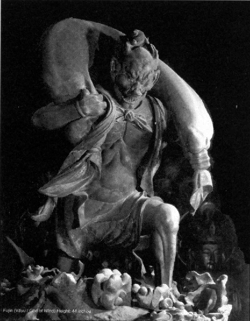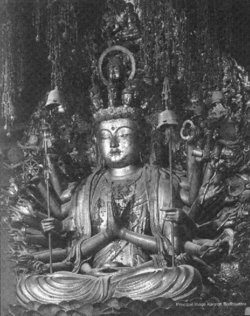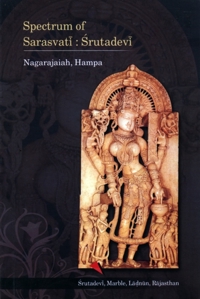The Chinese text, Suvarṇabhasottamasutra (417 CE), has a chapter devoted entirely to Sarasvatī which depicts three of her aspects:
-
As a deity of eloquence, she augments the expounder's speech.
-
As a preacher of herbal (medicinal) bath, in abhiseka and coronation, she cures diseases and purifies body.
-
As a battle goddess, she is protector.
The Sarasvatī chapter in the Buddhist Suvarṇabhasottama-sutta (417 CE), 'Sutra of Golden Light', has Chinese (5th century CE), Tibetan (8th-9th cent.), Khotanese (8th-10th cent.), Mongolian and Old-Uighur translations. The earliest Sanskrit text on which the fifth century Chinese version was based is not extant. But luckily later Sanskrit version of the sixth century has come down to us.
| 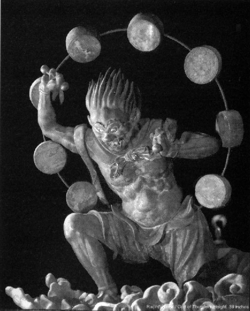 45 Varuṇa, Kyoto, Japan |
The Sutra of Golden Light has parallel Chinese stanzas of Sanskrit, and some of them are worth contemplating; Sarasvatī ca Vālmīkeḥ, '(you are) the eloquent speech of Vālmīki'.
The practice of spell-recitation and spell-rites is a common ritual found in both Buddhism and Jainism. The bathing ritual, as a sort of hydrotherapy, using spells and medicinal herbs preached by Sarasvatī is interesting. More detailed description is found in the Chinese version: 'These medicinal herbs are to be gathered, and then pounded and sieved during the Puṣhya asterism. The obtained powder is consecrated with a spell which is recited one hundred or 108 times' [Ludvik 164].
"Sarasvatī promises to come and bless those who practise the bathing ritual: 'She comes with a multitude of gods... her various retinues producing celestial music... The goddess assures that she will remove all diseases from the places where these beings dwell and that she will take away all their oppressions so that they may escape the cycle of rebirths and attain highest perfect awakening" [supra 171]. In this context the ritual of abhiṣeka, holy bath, may be considered. Albeit, this bathing ritual is indeed an extension of Sarasvatī's connections with water.
| 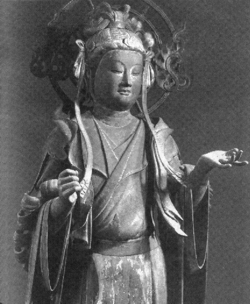 47 Srīdevī, Kyoto, Japan |
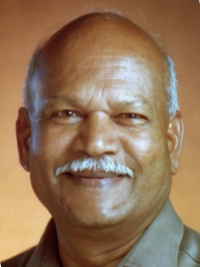 Prof. Dr. Nagarajaiah Hampana
Prof. Dr. Nagarajaiah Hampana

